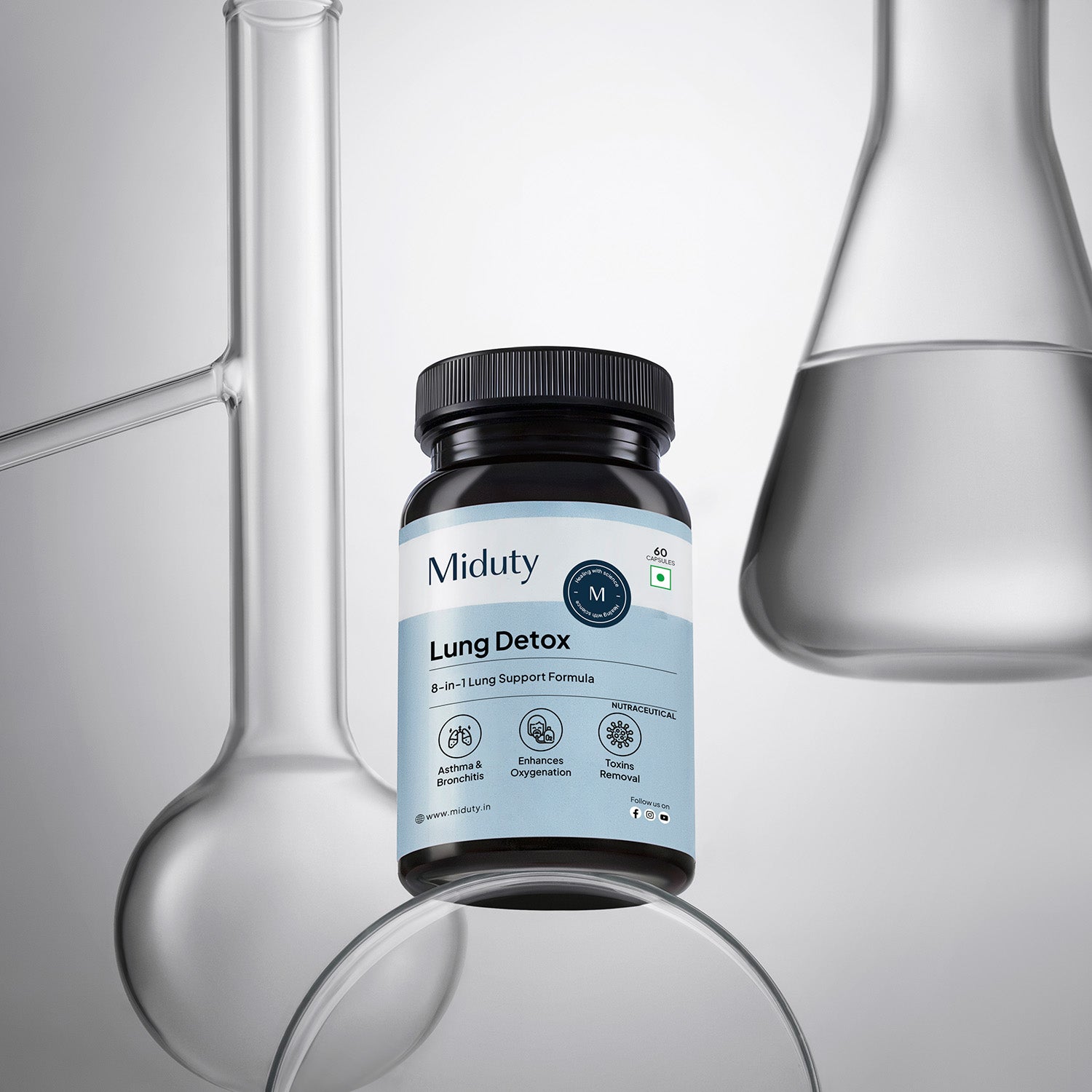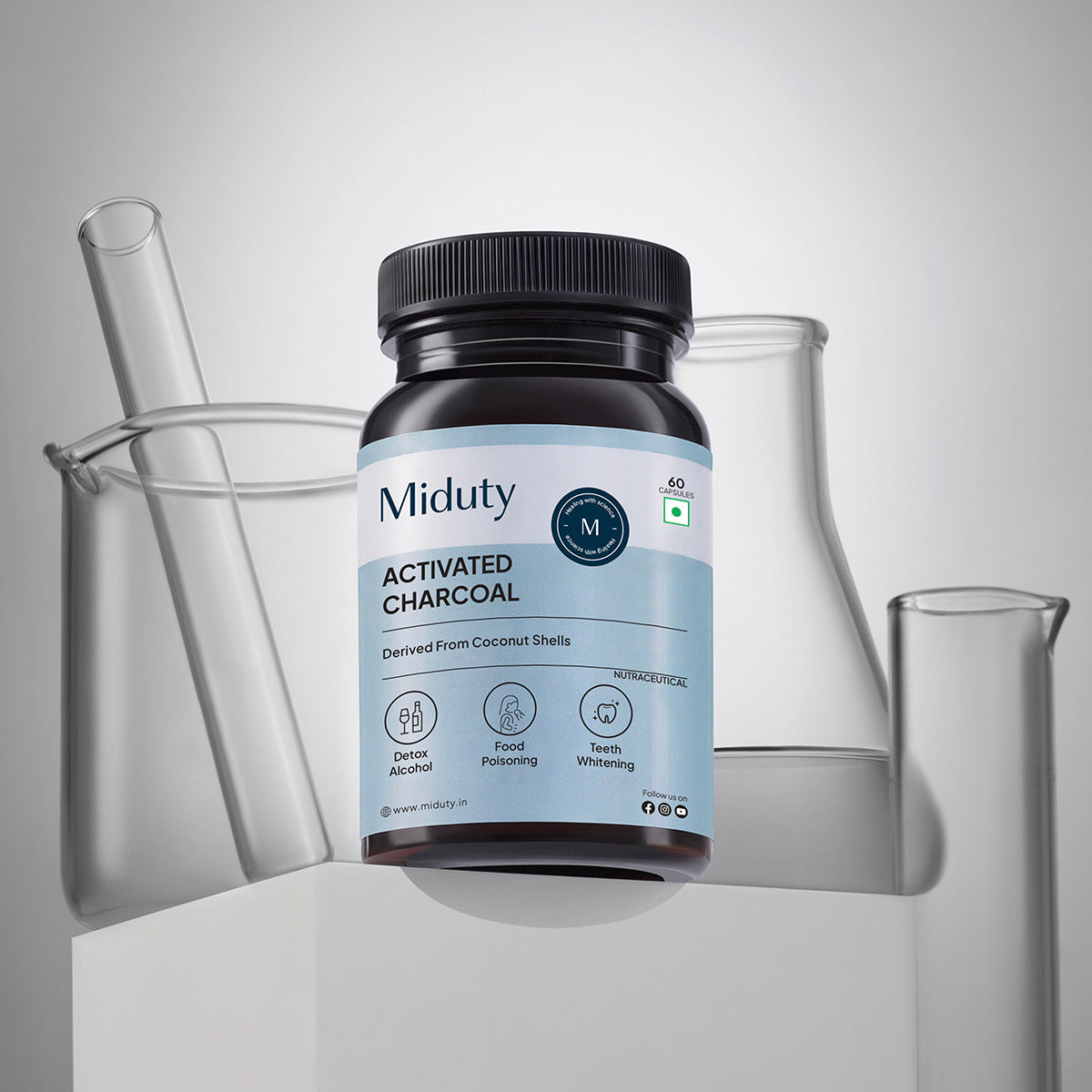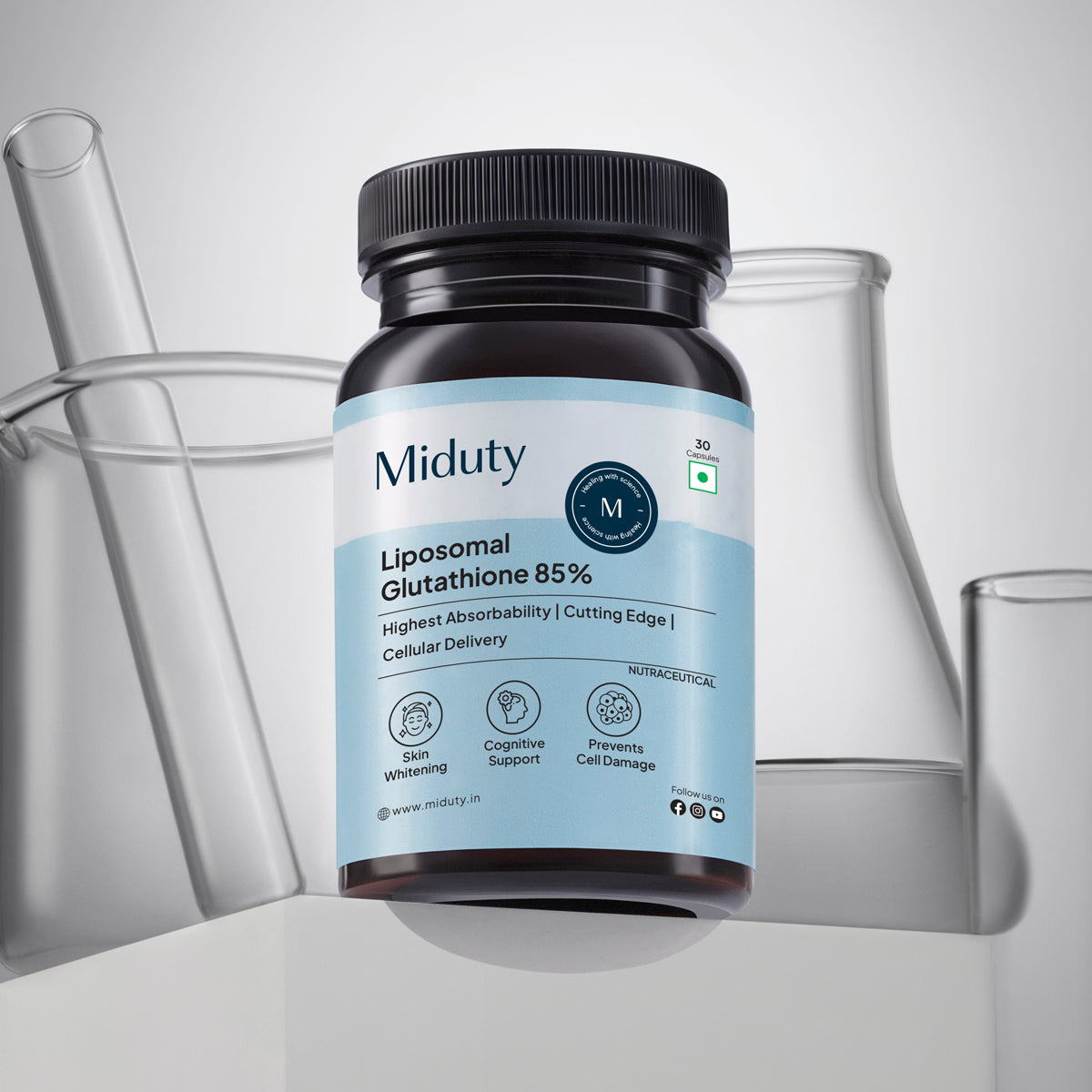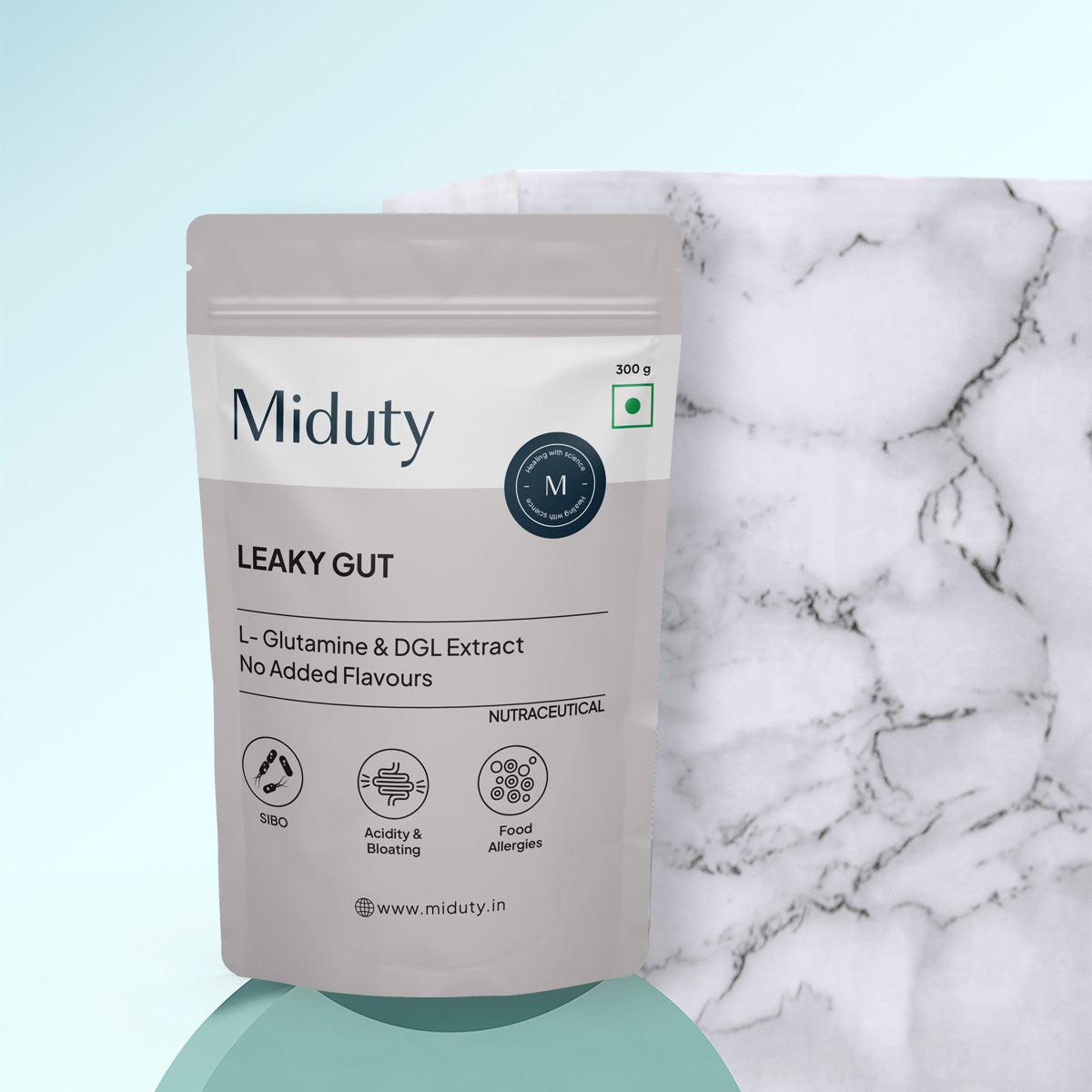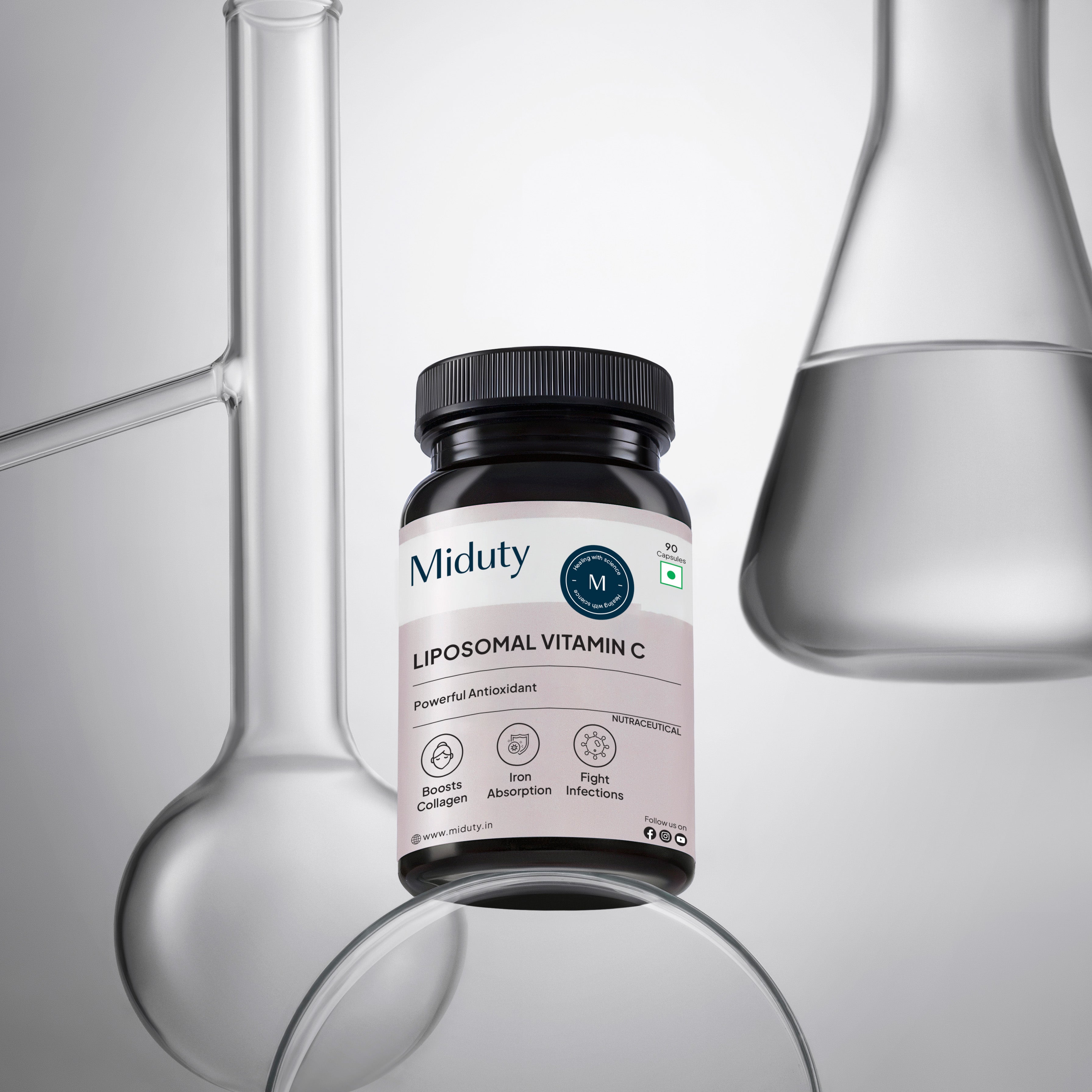
Dangers Of Microplastics in Human Body and How to Remove Them
According to a groundbreaking study by the World Wildlife Fund (WWF) and the University of Newcastle, the average person swallows up to 5 grams of plastic every single week which is roughly the size of a credit card. Think about it; over a month, that adds up to more than 20 grams, and in a year, you're looking at 250 grams. That's a quarter of a kilo of plastic coursing through your system. Yes! We are likely eating plastic without even knowing it.
Plastic pollution isn't just an environmental issue anymore. It's a direct health threat. As plastic waste breaks down, it doesn't vanish; it becomes tiny fragments called microplastics. These fragments are small enough to infiltrate our food chain, drinking water, and even the air we breathe.
Key Takeaways:
1. You are eating plastics every week: The average person unknowingly consumes 5 grams of microplastics every week the size of a credit card.
2. Foods containing Microplastics: Over 90% of table salt, various seafood, and even fruits and vegetables contain microplastics due to polluted ecosystems and farming practices.
3. Microplastics Can Disrupt Hormones: Chemicals in plastics like BPA and phthalates act as endocrine disruptors, increasing risks for infertility, thyroid disorders, and even cancer.
4. Reduce Microplastic Exposure: Avoid heating food in plastic containers and eliminate personal care products with ingredients like polyethylene and polypropylene.
5. You Can Flush Microplastics from Your Body: Follow a high-fiber, antioxidant-rich diet with probiotics, drink filtered water, and consider natural detoxifiers like chlorella, cilantro, and milk thistle.
A 2022 study published in Environmental International detected microplastics in human blood for the first time, suggesting that these particles can move throughout the body and potentially lodge in organs. That's not just gross; it's alarming. Our bodies are absorbing materials never meant to be consumed.
What's even more disturbing is that microplastics have been found in human blood, stool, lungs, and even placentas. That means these synthetic particles are circulating inside us, affecting everything from digestion to hormone balance.
The more terrifying part is that it's in places you'd never expect like salt, beer, vegetables, fruit, in your coffee cup, in your kitchen. We've unknowingly become part of a global experiment on plastic ingestion.
Let's dig into how this happened, where these particles come from, and most importantly, how we can get them out of our systems.
What Are Microplastics?
Microplastics are exactly what they sound like: tiny plastic particles less than 5 millimeters in size, about the size of a sesame seed or smaller. These plastics fall into two main categories:
1. Primary microplastics: Manufactured at a small size for specific uses like exfoliants in cosmetics, microbeads in toothpaste, or industrial abrasives.
2. Secondary microplastics: Formed when larger plastic items like bags, bottles, synthetic clothing, or tires break down due to sunlight, wind, and water exposure.
Where do Microplastics Come From?
Plastic waste is everywhere, from roadside litter to deep-sea sediments. Over time, sun, wind, and weather break this plastic into microscopic pieces. Rainwater runoff, wind currents, and wastewater from homes and factories carry these particles into rivers and oceans. Also, many everyday items contribute to this invisible threat. Here are a few major sources:
- Synthetic clothing (e.g., polyester and nylon) sheds fibers during washing.
- Car tires wear down and release particles onto roads and into the air.
- Plastic packaging fragments into pieces during use and disposal.
- Paints, cosmetics, and personal care products release microplastics directly into the water supply.
According to a study Synthetic clothes shed microfibers during washing up to 700,000 fibers per load. These fibers bypass water treatment facilities and end up in oceans, lakes, and ultimately our bodies.
Types of Plastic Found in Food and Water
The plastics detected in consumables are mainly polyethylene (used in bags and bottles), polypropylene (used in food containers and straws), polystyrene (think Styrofoam), and PET (used in soda bottles). Each has different chemical properties and potential health risks, from hormonal disruption to carcinogenic effects.
How Microplastics Enter Your Body?
1. Food and Water Contamination
The number one way microplastics enter your body is through food and drinking water. Seafood, particularly filter feeders like mussels and oysters, is notorious for accumulating plastic particles. They filter the ocean and all the plastic floating in it right into their tissues.
But seafood isn't the only problem. Bottled water contains almost twice the amount of microplastics as tap water, thanks to the plastic bottles and caps shedding particles over time. Tea bags, especially those made with nylon mesh, can release over 11 billion microplastics into a single cup of tea when steeped.
Watch this video to know if your tea bags are poisoning you.
2. Airborne Microplastics
Yes, you can inhale plastic, too. Researchers have found microplastic particles in the dust of homes, offices, and even hospital rooms. We breathe in these tiny particles daily, especially in areas with poor ventilation or where synthetic textiles and materials are used. A study published in Environmental International suggested that humans may inhale tens of thousands of microplastic particles per year, depending on location and exposure level.
3. Everyday Products as Culprits
Plastic is everywhere in the packaging of your food, the sponge you clean with, and even your toothpaste. Products like facial scrubs and exfoliants often contain plastic microbeads that wash down the drain and eventually enter your body indirectly through water or fish.
Microwaving food in plastic containers, using plastic wrap, or drinking from disposable plastic cups can also lead to plastic leaching, especially when heated. This is one of the most underestimated sources of exposure.
Common Foods Containing Microplastics
1. Seafood and Salt-
A report from the United Nations Environment Program estimates that over 11 million metric tons of plastic enter the ocean every year. Marine animals often mistake these plastics for food fish, turtles, whales, and seabirds alike. And guess what? If fish are eating plastic, so are you. A 2019 study published in Environmental Science & Technology found that seafood lovers could be ingesting up to 11,000 microplastic particles annually.
Even sea salt isn't safe. An investigation published in Environmental Science & Technology found microplastics in over 90% of table salt brands tested across the globe. Sea salt is harvested directly from oceans and evaporated, leaving behind plastic residue alongside the salt crystals.
This means everything from tiny krill to the tuna steak on your plate is contaminated with plastic.
Are you adding plastics to your food? Watch this video to know more.
2. Bottled Water and Beverages
Think bottled water is safer than tap? Think again. Researchers tested major bottled water brands and found an average of 325 microplastic particles per liter.
A study by Orb Media tested over 150 tap water samples worldwide and discovered that 83% were contaminated with plastic fibers. Beer, soft drinks, and even milk stored in plastic containers are also susceptible. Every time liquid sits in plastic, especially under heat or sunlight, microplastics can leach out and contaminate it.
3. Fruits, Vegetables, and Processed Foods
Fruits and vegetables can absorb microplastics through contaminated soil and irrigation water. Studies in agricultural areas showed that plants absorb plastic nanoparticles through their roots, which then travel to leaves and fruits. Lettuce, carrots, and apples are among the most affected.
Packaged and processed foods also contain microplastics, either from the packaging itself or during manufacturing processes. Plastic conveyor belts, machinery, and even gloves contribute to contamination
4. Honey, and Sugar
Honey and sugar have also tested positive for plastic. Why? Plastic particles in the air settle onto plants and flowers, are collected by bees, and processed into honey. Sugar, especially cane sugar, can be contaminated during processing and packaging.
Health Risks of Microplastics in the Human Body
1. Internal Inflammation and Cellular Damage
When these synthetic particles enter the human body, they lodge themselves in tissues, triggering inflammation and causing long-term harm.
Research has shown that microplastics can cross the gut barrier and enter the bloodstream, leading to systemic exposure. Once inside the body, they can accumulate in organs such as the liver, kidneys, and spleen. This presence can trigger oxidative stress, a condition where the body produces more harmful free radicals than it can handle, damaging cells and DNA in the process.
The chemicals used to manufacture plastics, such as phthalates, bisphenol A (BPA), and flame retardants, are not inert. Many of these substances are known endocrine disruptors, which means they can mimic hormones and interfere with natural hormonal processes. The result? Increased risks of infertility, thyroid issues, and even hormone-related cancers.
Studies suggest that chronic exposure to microplastics can impair cellular function, disrupt enzyme activity, and potentially accelerate aging and chronic diseases.
2. Disruption of Gut Microbiome
The gut isn't just responsible for digestion, it's the command center for 70% of our immune system. And guess what? Microplastics are now shown to interfere with the delicate balance of bacteria in our gut. Symptoms linked to microplastic ingestion may include bloating, gas, irregular bowel movements, and even chronic fatigue. Over time, constant low-level exposure can lead to systemic inflammation, a root cause of many chronic diseases.
Animal studies have revealed that microplastic exposure can reduce microbial diversity, which is critical for a healthy digestive system. This disruption can lead to the overgrowth of harmful bacteria, increased gut permeability (leaky gut), and chronic inflammation.
A disturbed microbiome has been linked to everything from IBS and Crohn's disease to mental health disorders like anxiety and depression. Considering that microplastics can survive stomach acid and digestive enzymes, they may stick around long enough to cause damage.
3. Long-Term Chronic Illnesses
Microplastics have now been detected in human lung tissues, where they may contribute to respiratory issues, especially in urban environments. Continuous inhalation could be linked to chronic lung conditions like asthma, bronchitis, and even cancer.
Additionally, microplastics have been found to interfere with gene expression and mitochondrial function, possibly contributing to long-term diseases. The accumulation of plastic particles in vital organs raises concern over their role in neurodegenerative diseases like Alzheimer's and Parkinson's.
4. Hormonal Imbalances and Endocrine Disruption
Plastics are loaded with chemicals that interfere with the endocrine system of your body's hormone regulation network. BPA (bisphenol A), phthalates, and other plasticizers mimic hormones like estrogen, disrupting normal functions and triggering a cascade of biological chaos.
According to the Endocrine Society, these chemicals are linked to early puberty, infertility, metabolic disorders, thyroid dysfunction, and even cognitive issues. For instance, a 2024 study found that children with higher phthalate levels had lower IQ scores and more behavioral problems. They don't just disrupt adult hormone systems; they can interfere with fetal development, which brings us to an even graver concern.
Sources of Microplastic Exposure You Might Overlook
1. Household Dust and Indoor Air
It's not just what you eat, it's also what you breathe. Microplastics are now present in household dust, meaning you're likely inhaling them every day without realizing it. Synthetic fabrics like polyester and nylon shed microfibers that float in the air.
Carpets, furniture, and plastic items release tiny fragments as they wear down. Cooking, vacuuming, and using fans can stir up this dust, making it easier to inhale.
According to a 2020 study published in Environmental Science & Technology, people could be inhaling tens of thousands of plastic particles annually just by being indoors. And it's not just about the fibers themselves, plastic-containing furniture, rugs, curtains, and electronics degrade over time, releasing microscopic particles into the air.
2. Cosmetic and Personal Care Products
Think your skincare is clean? Many personal care items still contain microplastics in the form of microbeads. These tiny balls of polyethylene or polypropylene are used in scrubs, face washes, and even toothpaste. These particles wash down your drain and end up in the ocean but they can also be absorbed into your skin or ingested indirectly.
Lipsticks, foundations, and powders also contain plastic polymers for texture and durability. Constant use means consistent exposure.
3. Packaging and Containers
Plastic is convenient, but at what cost? Food packaging, especially single-use plastics releases microplastics over time, especially when exposed to heat, sunlight, or repeated use.
Heating food in plastic containers or drinking hot liquids from plastic-lined cups increases the release of plastic particles. Even "microwave-safe" containers aren't entirely safe when it comes to microplastics. Similarly, takeaway coffee cups, with their plastic linings, can leach particles into your drink.
In fact, the European Food Safety Authority recently flagged certain phthalates as being dangerous even in tiny doses. These chemicals migrate from packaging into food, especially fatty foods like cheese and meat.
How to Reduce Microplastic Exposure in Daily Life?
1. Switch to Glass, Metal, or Biodegradable Containers
Want to fight back against plastic in your food and body? Start in your kitchen. Replace plastic storage containers with glass, ceramic containers or stainless steel alternatives. These materials don't leach chemicals, are more durable, and can be safely used with hot foods and liquids.
Also consider:
- Using beeswax wraps instead of plastic wrap.
- Investing in a reusable water bottle (not made of plastic).
- Carrying your own cutlery set to avoid plastic utensils when dining out.
Biodegradable materials made from cornstarch, bamboo, or other plant fibers are becoming more accessible and affordable. While not perfect, they are far less harmful than petroleum-based plastics.
2. Read Labels: Spotting Hidden Plastics
Plastic isn't always obvious. Many products contain plastic under names like:
- Polyethylene (PE)
- Polypropylene (PP)
- Polystyrene (PS)
- Polyvinyl chloride (PVC)
Learn to recognize these on labels. Cosmetics and toiletries often contain microplastics like polyethylene beads or acrylates. Choose natural or certified organic alternatives that exclude synthetic polymers. Similarly, avoid food products wrapped in single-use plastics. Buy bulk, opt for loose produce, and bring your own bags when shopping.
3. Lifestyle Changes to Protect Your Health
Small changes make a big difference:
- Stop microwaving food in plastic containers.
- Use a cloth or paper bag instead of plastic.
- Skip straws and single-use cups.
- Wash clothes less frequently and with cold water to reduce fiber shedding.
- Replace plastic brushes and sponges with wooden or natural fiber alternatives.
- Choose cotton, wool, linen, or bamboo clothing instead of polyester and nylon.
Most importantly, stay informed. Read up on the latest research, support eco-conscious companies, and spread awareness.
4. Filter Your Drinking Water
If you're still drinking bottled water, you're likely increasing your microplastic intake. Instead, install a high-quality water filtration system at home. Look for filters with reverse osmosis, carbon block, or ultrafiltration membranes, which are proven to remove microplastics.
5. Clean Smart and Ventilate
You can't eliminate all indoor plastic dust, but you can manage it better. Vacuum regularly using a vacuum cleaner with a HEPA filter, which captures fine particles effectively. When dusting, use damp microfiber cloths to trap particles instead of spreading them. Also, increase natural ventilation by opening windows regularly and using air purifiers with fine particulate filters.
How to Remove Microplastics from the Human Body?
While we can't avoid all microplastic exposure, we can help our bodies detox more efficiently by supporting natural elimination processes.
1. Eat a High-Fiber, Antioxidant-Rich Diet
Diet plays a major role in detox. Fiber acts like a broom, sweeping through your gut and binding to toxins, including plastic-related chemicals. Eat more: spinach, kale, quinoa, oats, chia, and flax seeds.
Antioxidants help repair the oxidative stress caused by plastic exposure. Include foods rich in: Vitamin C (citrus fruits), Vitamin E (nuts and seeds), and Selenium (Brazil nuts). You may add Chlorella, Cilantro and parsley, Fiber-rich foods.
Probiotic-rich foods like yogurt, kefir, kimchi, and sauerkraut can also improve gut barrier integrity, helping to prevent the absorption of harmful plastic particles. You may add prebiotics and probiotics powder, one that delivers 2 billion patented CFU probiotics along with prebiotic fiber in a hydrolyzed powder form, ensuring optimal absorption and effectiveness.
2. Drink More Water
Hydration keeps everything moving, including waste. Aim for 8–10 glasses of filtered water daily to support your kidneys and digestive system. Herbal teas like dandelion, ginger, or turmeric also support detox pathways.
3. Support Liver and Kidney Function
These organs are your built-in detox machines. Help them out by avoiding alcohol, processed foods, and excessive sugar.
Add liver-loving supplements like: Milk thistle, Turmeric, NAC (N-Acetyl Cysteine). Always consult health experts before adding new supplements.
Conclusion: It's Time to Act Before It's Too Late
We are surrounded and now filled with plastic. From our morning glass of water to the air we breathe and the food we eat, microplastics have made their way into every part of modern life. They're no longer just an ocean pollution problem they're a public health crisis.
The good news? We're not powerless. While we can't remove all microplastics from the planet overnight, we can start reducing our exposure today. Filter your water, switch to natural products, cook smart, clean mindfully, and choose brands that care.
Protecting yourself from microplastics is not just about health; it's about sustainability, responsibility, and legacy. The steps you take now don't just affect your body, they help build a cleaner future for everyone.
FAQs on Microplastics In Human Body -
Q1. How to remove microplastics from the body?
Supporting your liver is one of the most effective ways to help your body detox from microplastics. Make sure to stay well-hydrated, include plenty of fiber-rich foods in your diet, and steer clear of heavily processed items. You may also want to consider adding liposomal glutathione as a supplement to enhance detoxification.
Q2. How to stop eating microplastics?
Choose to dine in and steer clear of plastic utensils, containers, and cutlery whenever possible. Studies have shown that plastic takeout packaging can leach microplastics into your food. Whenever you can, eat at home or cook your meals to reduce exposure.
Q3. Can sweating remove microplastics?
While sweating can help remove certain plastic-derived toxins like BPA, there's limited evidence that it eliminates microplastics. These particles are primarily cleared through the liver and digestive system, not through sweat.
Q4. How long do microplastics stay in your body?
The exact duration microplastics stay in the body before being eliminated is still unclear. However, their presence in human stool indicates that some ingested microplastics are excreted, while others may accumulate in organs over time.
Q5. Do microplastics make you fat?
Yes, studies have indicated a possible connection between microplastics and weight gain, largely due to their impact on hormones and gut health. Microplastics can imitate hormones like cortisol and alter gut bacteria, potentially boosting fat production and increasing the risk of obesity.
References


